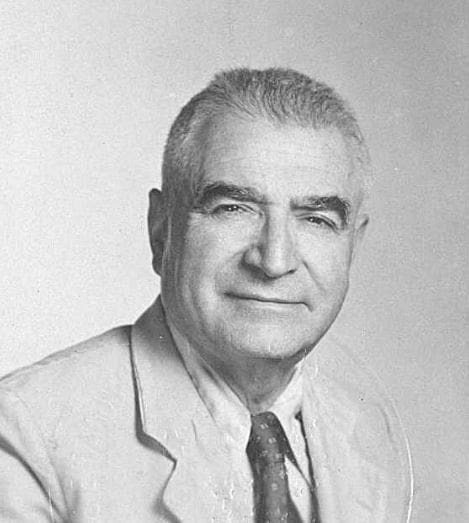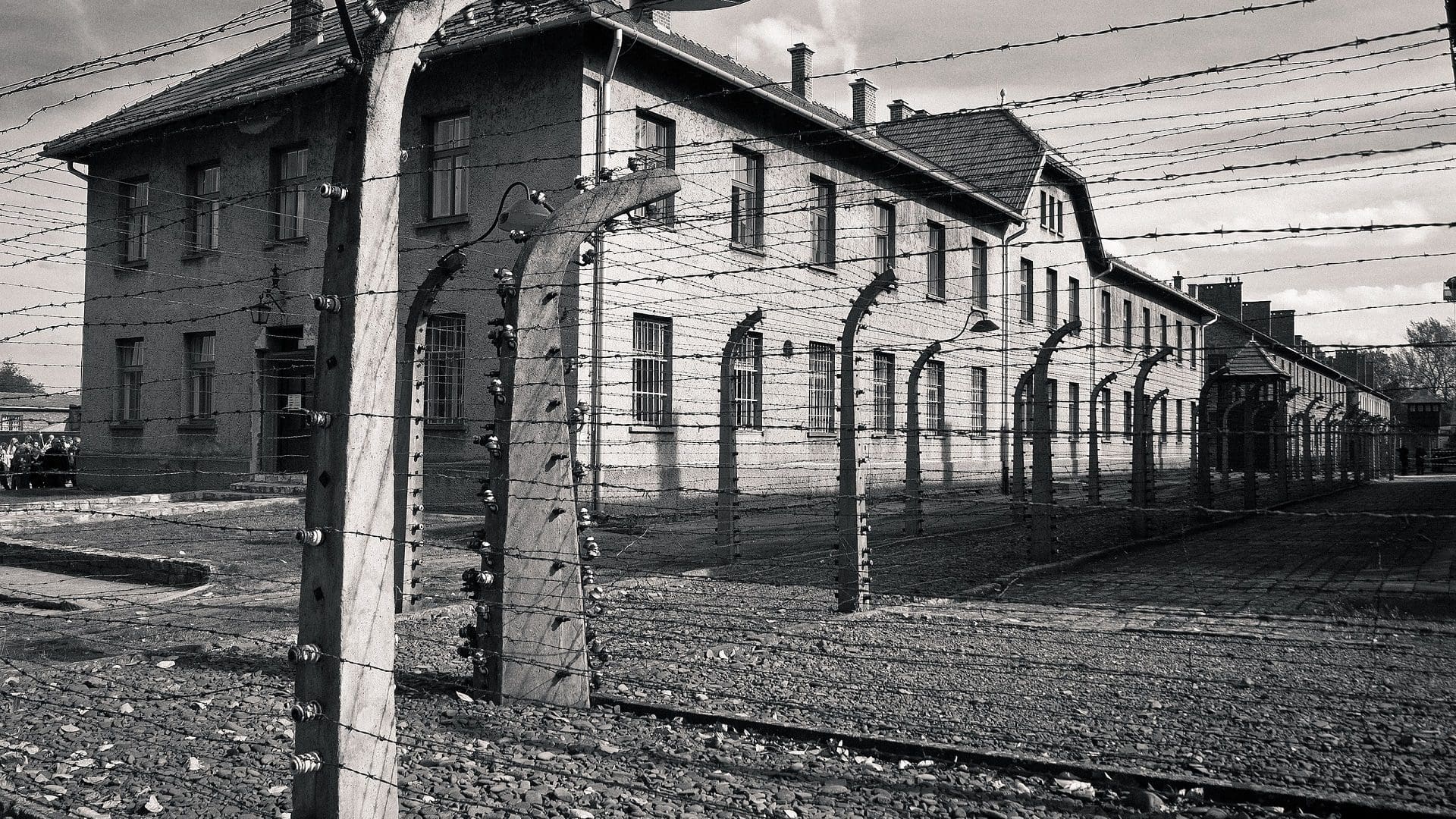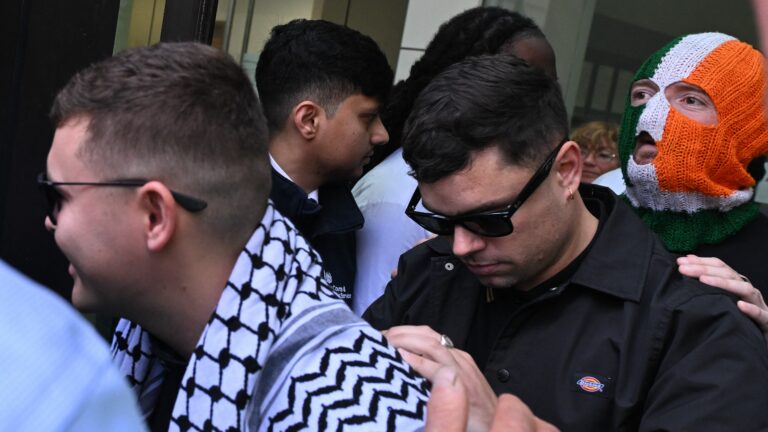In the fall of 1960, the post office brought a strange publication to the editorial offices of several Hungarian newspapers: the booklet showed the portrait of an old man between barbed wire, and the title was: ‘The true portrait of a modern Cain’. The publication was published by the Zik printing house in Tel Aviv, Israel, and was published in both French and English. The pamphlet was about Béla Fábián, a lawyer and former member of the National Assembly: it claimed that Fábián was an ‘evil kapo’, a ‘foot-licker of the Nazis’ in Auschwitz and was responsible for the death of many deported Jews[1].
Béla Fábián was born as Béla Feuermann on August 13, 1889 in Tállya, Borsod, in rural Hungary. As a novice lawyer, he worked in the office of Vilmos Vázsonyi, then fought in the First World War and was taken prisoner by the Russians. This is where the Soviet revolution reached him, which made Fabián an anti-communist for life: upon returning home, he wrote one of the first anti-communist books, The Destruction of Russia under the Bolshevik Rule, and later many more publications that showed the dark side of communism (some of them were later banned in the Rákosi era). Between 1922 and 1939, Fábián was a member of the National Assembly in liberal colours, and in this capacity, he was an unrelenting critic of the Horthy system. However, in 1924, for example, he also duelled with Ferenc Ulain, the known far-right politician. Later, he became the president of the Committee for Veterans in the neolog Jewish religious community in Pest, which brought together veterans of the First World War from all walks of Jewish life. In this position,
he was arrested for his connections with the resistance in April 1944 and deported to Auschwitz via Kecskemét.
Apparently, the first accusations were made by the ex-Mrs Vilmos Vázsonyi, Margit Szalkai, who attacked Fábian in an interview[2]. In the paper Haladás, the editor-in-chief, Béla Zsolt (himself a survivor of Bergen-Belsen), attacked Fábián soon after, at that time not with his activities during the deportation, but as a Jewish example of ‘clerical fascism’, referring to him as the Jewish equivalent of József Mindszenty[3]. His article was published on February 3, 1949, the first day of the Mindszenty trial. According to the article of Világ a little more than a week earlier, on January 25[4], a rally was held in New York supporting Mindszenty, where Béla Fábián defended the arrested cardinal. (Later, Fábián also wrote a book in defence of Mindszenty, titled The True Portrait of a Modern Martyr—clearly the above-mentioned slanderous publication was referencing this book of Fábián).

Fábián was also undoubtedly a thorn in the side of the regime, since, as a Jewish leader, he actively attacked the Soviet Union and the Hungarian government in the foreign press. In March 1950, for example, he accused the communist Hungarian government in the columns of The New York Times of still having an ‘anti-Jewish attitude’ in various Hungarian ministries[5]. In January 1951, his claim that Hungarian Jews may soon be deported to ‘Soviet camps’ appeared in international newspapers[6]. In November of that year, he declared that the country’s leaders were ‘perverted anti-Semites’, ‘including leaders of Jewish origin’[7]. Perhaps in response to these, in 1952, the Buenos Aires-based newspaper Hatikva, edited by former Transylvanian left-wing Zionist Andor Glück, heated up the kapo accusations. Fábián was unable to reach this paper, but in 1955, he won a lawsuit against the New York-based Egyleti Élet (Union Life), which accused him of being a kapo in Nazi Germany. In the lawsuit, he was awarded a substantial sum of $100,000 in compensation, but the paper had ceased to exist by then, so he never received the sum.
In May 1959, László Gyáros —a one-armed Jewish veteran of the Spanish Civil War and the Soviet operations in Hungary, then the President of the Information Office of the Council of Ministers, essentially the government’s spokesman—held a press conference in front of foreign journalists, at which a reporter inquired about Fábián’s attacks on the Hungarian government. In his answer, Gyáros began to talk about how ‘all those who are interested in the person of Béla Fábián know very well…[that] Fábián, like the ‘dog’ (kopó) of the Auschwitz, Birkenau and other Jewish and Gypsy camps (sic!). operated and was the cause of the death of many people’[8]. His base for reference was the 1952 article published in Hatikva. His statement was carried by many newspapers, but only Népszabadság managed to get the word ‘kápó’ right.
This takes us to the 1960 pamphlet, which was sent to Hungarian editors.
The publication only printed the signed, facsimile statements of three witnesses (although this did not matter much, since they were not statements made before a court). They were doctors József Bencze and Aladár Nyirő, and journalist Lajos Farkas. All three people seem to be identifiable, even though it would not have made sense to publish a signed document from fictitious persons. The best known among them was obviously Bencze, who was a doctor and medical historian, a member of the Medical History Committee of the Hungarian Academy of Sciences—and of course an active member of the workers’ movement from 1920 and a Communist Party member from 1945. According to Bencze, he was in distress in the camp, and Fábián refused to give him laxative medicine. According to Nyirő’s testimony, he was deported from Szombathely on July 7, 1944, and spent three months in the Auschwitz gypsy camp, where Fábián was a kapo.
The story is flawed in several ways, because although Jews may have ended up in the gypsy camp, the literature agrees that the camp was liquidated on August 2, so the doctor could not spend three months there. Lajos Farkas referred to a well-known rabbi, Dénes Friedmann from Újpest, who, according to his claim, told him that Fábián refused food from his child. Unfortunately, the rabbi could not confirm this, as both he and his child died in the Holocaust.
The publication, on the other hand, most certainly contained outrageous fabrications as well. According to a certain Imre Hirsch —stated without a signed confession—for example, Fábián was imprisoned in a barrack with the Olympic champion Jenő Fuchs, who asked him for food for his son. In response, Fábián allegedly beat Fuchs for half an hour. The accusation would be a serious one—if it were true, except that Fuchs was never deported, he survived the Holocaust in the Budapest ghetto. Of course, the fabrication was convenient, since Fuchs died in 1955, so he could no longer refute the allegations[9].
It is clear from the files of the Historical Archives for State Security that
the smear campaign was organised by the Hungarian government.
One 1961 report mentioned that ‘in 1960, as part of our initiative, a pamphlet was published in English in Tel-Aviv by the (Hungarian) Foreign Ministry titled The True Portrait of a Modern Cain, in which we presented Fábián’s deeds in concentration camps’. Later that year, a plan was made for the ‘further smearing of Fábián’, which read that ‘his further compromising is highly needed’. A few years later, more articles were published in the Hungarian press, emphasising his role as a kapo. In 1963, a satisfied report read: Fábián was so ‘problematic’ that even his own allies in the Hungarian emigrant groups avoided him[10].
These documents also revealed that the true author of the pamphlet was Rezső Bányász, a Communist historian and politician, who at one point served as press officer of the Hungarian Foreign Ministry (later he served as Hungarian ambassador to the UK, Ireland, and Canada).
The smear campaign had a serious impact. A Canadian Jewish newspaper called Fábián a ‘Hungarian ex-Nazi agent’, and Israeli newspapers wrote that he had been baptised. As far as we know, Fábián responded to the articles and the pamphlet in a larger volume only once, in the columns of Délamerikai Magyarság (The Hungarians of South America), in the fall of 1961[11]. This can rather be called a counterattack: he called his accusers former agents of ‘Horthy’ and communist spies. It is worth noting that, in his article, he did not deny at any point that he was a kápó—either because he felt responding to the accusation was below him, or because the accusation was true.
Fábián was never once given the opportunity to clear his name in the Hungarian press. The former representative died in San Juan, Puerto Rico on December 23, 1966, and was buried in New York. Fortunately, the Daily News Bulletin published by the Jewish Telegraphic Agency (JTA), which was the most widely read Jewish news source of its time, made no mention of the cover accusations. The title of his obituary read: ‘Dr Bela Fabian, Hungarian Jewish Leader, Dead; Fought Anti-semitism’[12].
[1] The true portrait of Béla Fábián. The true portrait of a modern Cain. Tel Aviv, Zik, 1960. 25.
[2] Haladás, 1949. Feb 10. 7. Haladás, 1949. Nov 24. 3.
[3] Haladás, 1949. Feb 3. 1.
[4] Világ, 1949. Jan 25.
[5] Daily News Bulletin, 1950. March 20.
[6] Daily News Bulletin, 1951. Jan 12.
[7] Wiener Library, Hungarian press clippings.
[8] Vas Népe, 1959. May 20. 1.
[9] The true portrait of Béla Fábián, 24-31. and Szakály Sándor: Fuchs Jenőről. Legendák továbbéltetése. BBC History, 2017. Nov. 5–7.
[10] ÁBTL, 3.2.4. K-1410, pages 114, 112, 122.
[11] Délamerikai Magyarság, 1961. Sept 28. 3.
[12] https://www.jta.org/archive/dr-bela-fabian-hungarian-jewish-leader-dead-fought-anti-semitism
Related articles:








